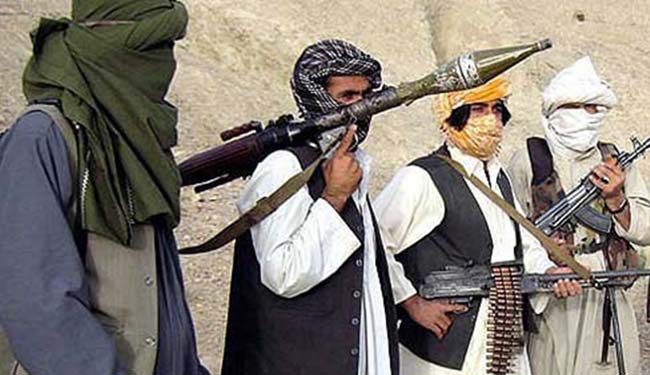Terrorism is a flaming fire which burn black and white, Muslim and None-Muslim eastern and western, sinful and sinless equally. According to reports, from 1970 to 2016, there were almost 150,000 terrorist incidents happened worldwide. Just over 23,000 occurred in North America and Europe. In 2014 alone, 13,463 terrorist attacks occurred around the world, causing at least 32,700 deaths and more than 34,700 injuries. As of November 16, 2015, 658 detainees from Guantanamo Bay have been transferred: 532 detainees pre-January 22, 2009, and 126 detainees post-January 22, 2009. Of those transfers, at least 117 (17.8 percent) have been confirmed as re-engaging in terrorist activity, and 79 (12 percent) have been suspected of re-engaging in terrorist activity. Nearly 60 percent targeted private, infrastructural, educational, media, or religious individuals and institutions. So, it proves that terrorism is common flaming fire which burns all humankind evenly. And it requires an international consensus to formally ensure that no political or economic goals are hunted at cost of human blood.
In regard to Afghanistan as a part of the world, there is no positive development in security situation. Insecurity and insurgent activities have taken an upward trend. Although the Taliban’s activities were limited to southern and south-eastern provinces until a few year back, now there are daily reports of clashes, explosions and deaths nearly all over the country, from the east to the west, the north and to the south. The escalation of fighting has sent the casualties of civilians as well as of both sides to the conflict worryingly high. Over the recent months, Helmand and Kunduz provinces have taken the brunt of the fighting. The Taliban overran the strategic Kunduz city after launching a surprise multi-pronged assault on it at dawn on last Monday for a second time almost exactly a year after their first brief takeover of the city in fifteen years following their ouster. The last year’s Taliban capture of Kunduz undermined the faith of Afghans in the ability of Afghan National Defence and Security Forces (ANDSF), and in the future of the country, and also gave the US a pretext to delay its Afghanistan troop drawdown. However, Afghan forces were able to regain control of Kunduz, but other key urban areas remain under threat from the Taliban.
Many of the failure seasons attributed to mismanagement by the National Unity Government, National Security Directorate and an Afghan Ministry of Defense.While there was a lot of criticism of the government for failing to stop the fall of Kunduz to the Taliban last year, the bitter experience repeated once again. By the same token, Helmand’s two districts – Nawa and Khanshin—fell to the Taliban one after another in two days, and the provincial capitals of Baghlan and Uruzgan provinces are also under serious threat. Due to lack of strong political will against terrorism and weakness of government and the flaws have led to growing insecurity, and the collapse of districts and even provincial capitals to the Taliban. Even though the government uses the term -- “tactical retreat” -- for the fall of regions, many questions about it remain unanswered. The fall of districts has become a routine matter. Every week, there are reports about districts falling to the insurgents, and then retaken by government forces. The Taliban’s capture of districts and government checkpoints has become a tool for them to seize military vehicles and large cache of weapons, which are then used against ANDSF. Also in some instances, covert deals are blamed for the fall of regions and districts to the Taliban, with some reports suggesting that some military officials leave checkpoints to the Taliban in exchange for money, but yet leaders of the government not only do not question them, but also send them elsewhere, and even recognize their performance sometimes. This unfavourable practice has led to the incapability of ANDSF to repel insurgent offensives despite spending billions of dollars on them.
According to the UN reports, battles in Kunduz have forced tens of thousands of people to leave their homes but many trapped inside the city facing severe food and water shortages, lack of health care and so many other issues. Some reports indicate that scores of civilians so far have been killed or wounded during the war. Some are coping with various challenges and even many reached Kabul to escape the war. "I was a university student in Kunduz, Taliban seized our home, we had a lot of problems over there and hardly managed to escape the city," said a Kundoz resident Hamida.” However, a number of Afghans from across the country have shown a willingness to help their countrymen in Kunduz.
To successfully combat against international threats, to successfully prevent gaining political goals by bloodshed games of tragedies and to successfully stop terrorism at its source, there is a need for an international convention as global legal counterinsurgency strategies. But hopelessly the problem is that stakeholders better know what the ground realities in world or in Afghanistan are and what the real solutions are. The top political players, the self-interested power-seeking groups and warring factions with conflicting agendas tend to ignore facts and never touched the root solutions; some do so because they profit from conflict and others live in a bubble of a self-imagined, unreal world. Given the high human and material costs of the several cycles of the Afghan conflict, only fools from either side will expect to win this endless war. Indeed, Afghanistan’s wars have produced no winners in the past and will never do so in the future.
Home » Opinion » Counterterrorism Needs International Convention
Counterterrorism Needs International Convention
| Mohammad Zahir Akbari

